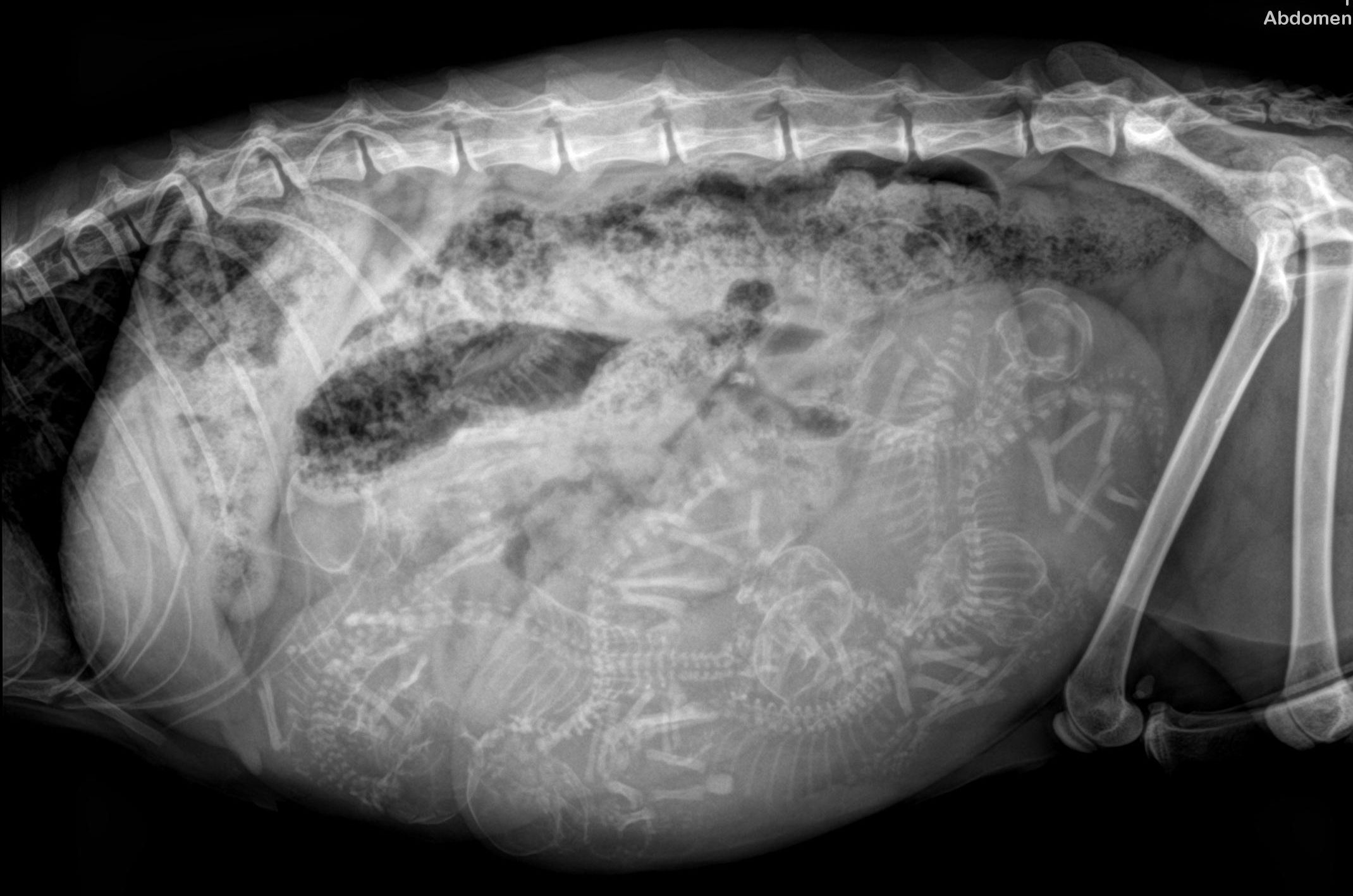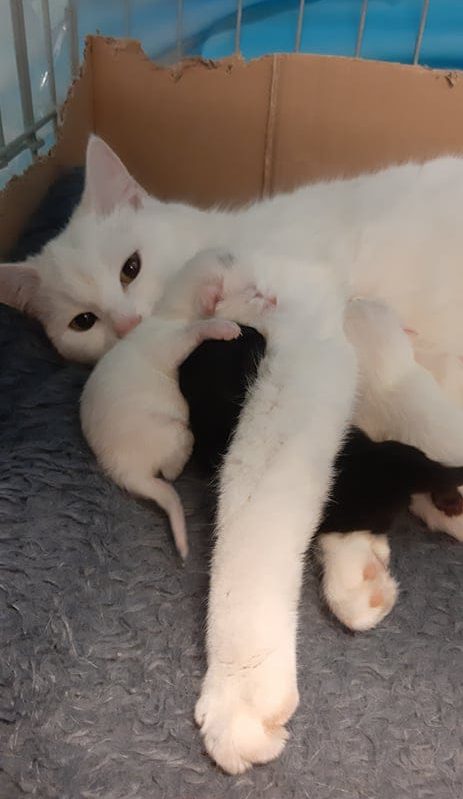Parturition in cats
Signs of parturition
The presence of milk
Milk in the udder can occur from a week to 24 hours before parturition, and the nipples swell and turn pink.
Swelling and relaxation of the vulva
This occurs a few days before parturition, but less in cats than in bitches.
Loss of the mucous plug
The emission of this colourless viscous liquid from the vulva occurs 24 hours before contractions.
Lower rectal temperature
A 1°C drop in temperature before parturition (37°C-38°C), but this is an inconsistent sign in cats
Behaviour
12 hours before giving birth, the cat is worried, feeds less, isolates herself and prepares her nest.
Hormones
Progesterone levels drop in the 48 hours preceding parturition, but this is not visible and therefore cannot be checked by the owner without a veterinarian.

Advice and recommendations
Equipment to have on the day of the birth
Openings and towels, absorbent mattress pads, heat lamp(s), crate, bulb (to clear airways), scissors, thread, betadine.
The temperature
During the last week of gestation, the cat’s temperature should be taken in the morning and evening. The nest should be heated to an ideal temperature of 28-30°C. Kittens can’t regulate their own temperature, so you need to check their body temperature, which should be 35.5°C at birth, rising gradually thereafter. If the temperature doesn’t rise sufficiently, you can place hot-water bottles in the nest, surrounded by towels. Be careful not to burn the young!
The birthing process
In the female cat, babies are more likely to be presented posteriorly, but this does not necessarily cause problems.
In some cases, an ultrasound scan is recommended to determine the number of kittens and their viability.
If the mother can’t trigger the pups to breathe by licking them, or if she doesn’t, it’s up to the owner to do so. This can happen when the mother is inexperienced, in pain or discomfort, or when the environment is not conducive to whelping. Start by clearing the respiratory tract with a bulb/syringe, then rub the kitten’s thorax with towels, head downwards, but without shaking!
If the mother doesn’t cut the umbilical cord herself, you’ll need to prepare a thread, scissors and betadine. Tighten the cord with a disinfected thread about 2.5 cm from the navel, then cut with disinfected scissors about 1.5 cm after the ligature. The stump is then disinfected with a little betadine on a compress.
When should I contact my vet?
Concerning the mother: if gestation lasts more than 65 days, if the time between 2 kittens exceeds 2 hours, the cat meows a lot and bleeds during delivery, the number of kittens born does not correspond to the expected number, malodorous discharge or trembling and rapid breathing after delivery,
Concerning the kittens: absence of respiratory movement, cyanosis (blue mucous membrane), weakness, vocalization, loss of sucking reflexes, depression and reduced suckling, drop in temperature (-35°C), weight loss of more than 10%, diarrhea, paleness of mucous membranes, petechiae (red spots), icterus (yellow coloration of skin and mucous membranes), etc.


After the kittens are born
Kittens are born blind and deaf: they open their eyes and hear sounds between day 7 and 10. But it will be 15 to 20 days before their senses are better developed.
You should also monitor their weight gain, weighing them every day at the same time. A kitten should gain around 7 to 20 grams a day. Weight stagnation is possible during the first two days, but after that, the kitten must put on weight!
Recognizing the kitten’s sex: for the first few weeks, it’s hard to tell whether the kitten is male or female. For females, the slit-shaped vulva is very close to the anus. For the male, the separation between the anus and the penis orifice is greater.
Feeding
Mother’s diet
During gestation and lactation, it’s important to provide the female with plenty of food and fresh water. The female’s needs will increase, so she will feed more. She needs a complete food, concentrated in energy and protein. It is therefore advisable to feed a kitten food richer in calcium and protein.
Kittens’ diet
The first milk is very important, as it contains all the antibodies the kittens will need to defend themselves. If the kittens can’t find their mother’s teats, they need help.
Generally speaking, the mother breastfeeds the kittens until they are 3-4 weeks old, but it is possible that the mother cannot breastfeed the kittens for various reasons. In this case, there is another option: artificial feeding. Cow’s and human milk should be avoided, as there is a big difference in components with cat’s milk.
Milk powder is diluted with mineral water in a container such as a bottle or syringe. Milk should be fed lukewarm (37°C -38°C). To avoid false swallowing, the kitten should be held vertically and the milk fed slowly. In the first few weeks of life, kittens should be fed regularly, and no more than 6 hours should elapse between 2 feedings. If kittens haven’t had enough milk and are still hungry, they’ll become restless and cry out, but if they’re not hungry, they’ll sleep.
The young are weaned at around 4 weeks of age. This is when the mother is less available and less willing to feed. The kittens will start to take an interest in the mother’s food bowl, as she eats kitten kibble while nursing. The kittens will therefore start to eat harder foods.
After each meal, it’s important to carry out the nursing that is normally done by the mother. This means gently massaging the kitten’s abdomen and stimulating the ano-genital area to enable her to relieve herself.
